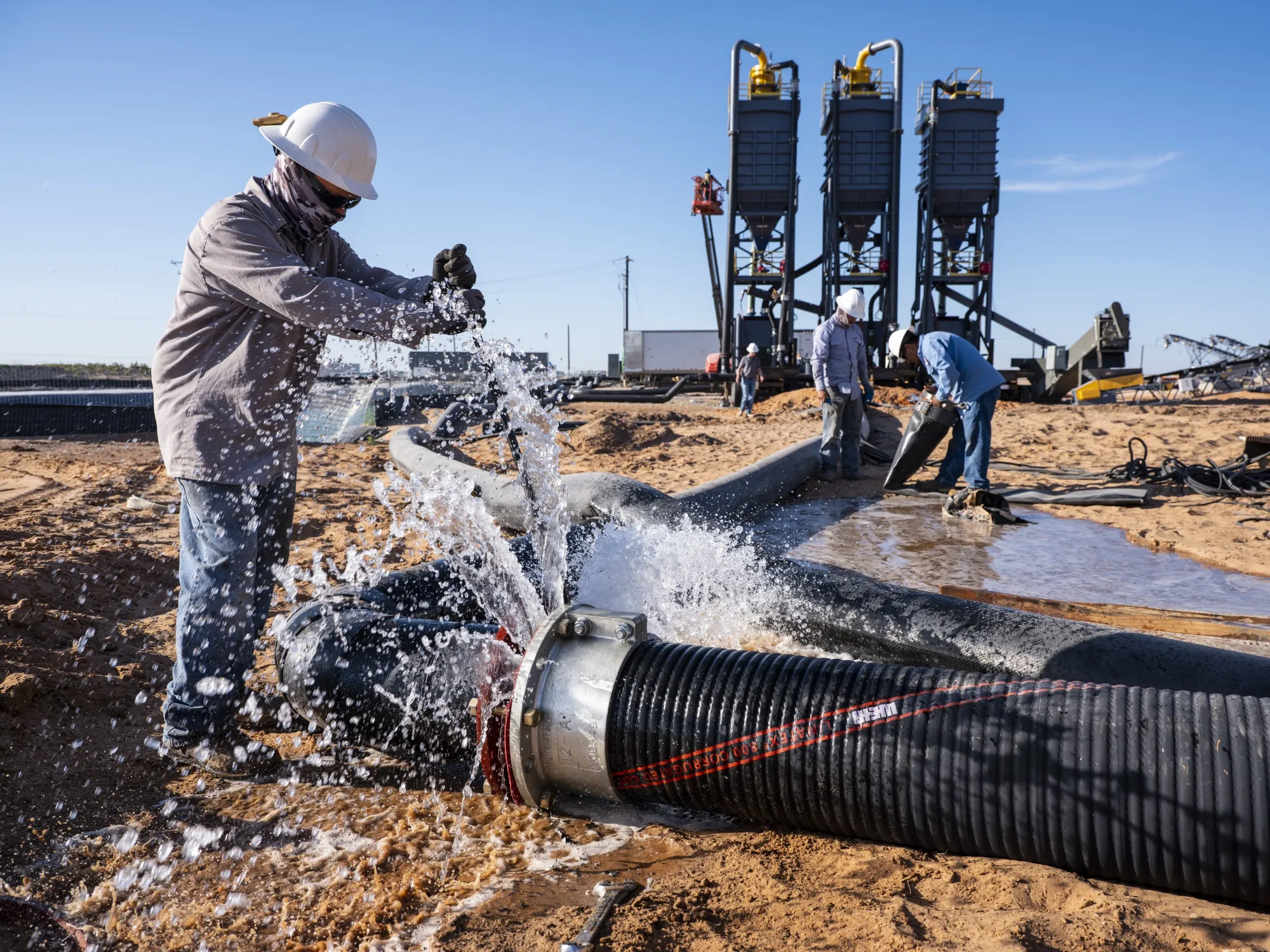
Hydraulic fracturing, or fracking, has been thrust back into the public spotlight as Vice President Kamala Harris’ change of position on it comes under scrutiny given her campaign for the White House. The groundbreaking technique for oil and gas extraction that vaulted the US to energy independence has for years been a lightning rod for controversy. Many environmentalists oppose it because of its impact on water, carbon emissions and earthquakes, while proponents defend it as key to the US economy.
What is fracking?
Fracking was first used commercially in 1949 in the oil- and gas-rich US state of Oklahoma. The technique involves forcing water mixed with sand and chemicals into a well to create fissures in underground rocks known as shale so that oil or gas trapped inside can be captured. Advances in another technique, horizontal drilling, came in the early 1980s and opened up access to thin layers of shale deep underground. The subsequent exploitation of the Barnett Shale formation in North Texas proved large-scale fracking was economically viable.
How has Harris’ position on fracking changed?
Harris opposed fracking when she competed for the Democratic Party’s nomination for the presidency in the 2020 election. At a CNN town hall in September 2019, she said she’d want to ban fracking on federal lands on the first day of her presidency and that she supported legislation to expand the prohibition.

She moderated her views after Joe Biden selected her as his running mate in the 2020 race. Their campaign supported new restrictions and other regulations on fracking but not prohibitions. In office, their administration has imposed policies that limit oil and gas development, but it has not barred fracking on federal lands.
After Harris became her party’s candidate for the presidency following President Biden’s withdrawal from the race in July, her campaign said she does not support prohibiting fracking. She said the same thing in an interview with CNN in August and in a debate Sept. 10 against her Republican opponent, former President Donald Trump.
How has fracking changed the energy trade?
US oil and gas output has more than doubled over the past two decades, largely thanks to shale-rich areas such as the Permian Basin, which stretches from Texas to New Mexico and alone pumps more oil than most OPEC nations. That’s enabled the world’s largest economy to export fossil fuels at a pace unthinkable until recent years.
America’s new dominance undercuts the ability of the Organization of the Petroleum Exporting Countries to control the oil market. OPEC tried to drive North American frackers out of business starting in 2014 by flooding the market with crude, provoking a price crash. Although some frackers went bust, overall they proved nimble, innovating to reduce production costs and stay alive.
The abundance of shale gas has helped the US cut its use of coal, the most polluting fossil fuel, nearly in half since 2008. What’s more, American gas is now available on world markets, thanks to a process that enables it to be super-cooled into liquefied natural gas and transported via ship.
Where else is fracking done?
Canada was the first country to thoroughly embrace shale extraction outside the US. It’s also spreading to Argentina, Australia, China and Saudi Arabia. In other places, the practice is controversial, and some countries have banned it outright. In the UK, the government overturned a moratorium on new fracking permits in 2022 amid an energy crisis caused by Russia throttling its gas exports.

What are the objections to fracking?
Opposition to fracking within communities often focuses on water concerns. The copious amount of water needed for fracking — as much as 16 million gallons per well in the US — can threaten local supplies, and concerns have been raised that shale operations may contaminate water sources. Fracking and, more commonly, the pumping of wastewater into wells, have been connected to earthquakes. They’ve been mostly small, but temblors in China’s shale hub in Sichuan province killed two people and damaged 11,000 homes in early 2019. More broadly, critics of fracking say that by making oil and gas more plentiful, it has reduced incentives to invest in a switch to renewable energy, even as climate scientists call for speeding the change.
What do defenders of fracking say?
They note that a growing number of companies are reusing the water employed to frack a well multiple times and are reducing emissions from their operations by utilizing electric-powered vehicles instead of the diesel-powered fleets typical in the oil and gas industry. They point to the jobs created by fracking and the cleaner air natural gas produces where it replaces coal. Their larger argument is that, compared with coal, gas emits half as much carbon dioxide, the most important greenhouse gas. There’s a robust debate as to how much the carbon savings are offset by leaks throughout the natural gas supply chain of methane, a more potent greenhouse gas than carbon dioxide. Supporters tout natural gas as a “bridge fuel” that will ease the transition to renewables, supplying power when wind and solar sources don’t, until sufficient storage capacity is built.
Share This:




 CDN NEWS |
CDN NEWS |  US NEWS
US NEWS 






























COMMENTARY: Where the Fight Against Energy Subsidies Stands – Alex Epstein